If you’re expecting the old S.E.A. Aquarium with a few upgrades, think again. Officially opening to the public on 24 July 2025, the newly launched Singapore Oceanarium is not just bigger (three times, to be exact). It’s also more thoughtful, immersive, and educational, with experiences that are carefully designed to leave a lasting impression.

Image Credit: Singapore Oceanarium
With 22 themed zones spanning prehistoric oceans to possible futures, and a visible commitment to marine conservation, this isn’t just a place to take nice photos, though you’ll absolutely want to.
Here’s what’s new, what’s different, and what to look out for depending on the kind of visitor you are.
Also read: Sentosa’s Hidden Gems: 6 Attractions You Might Not Know About
A rebrand that means something
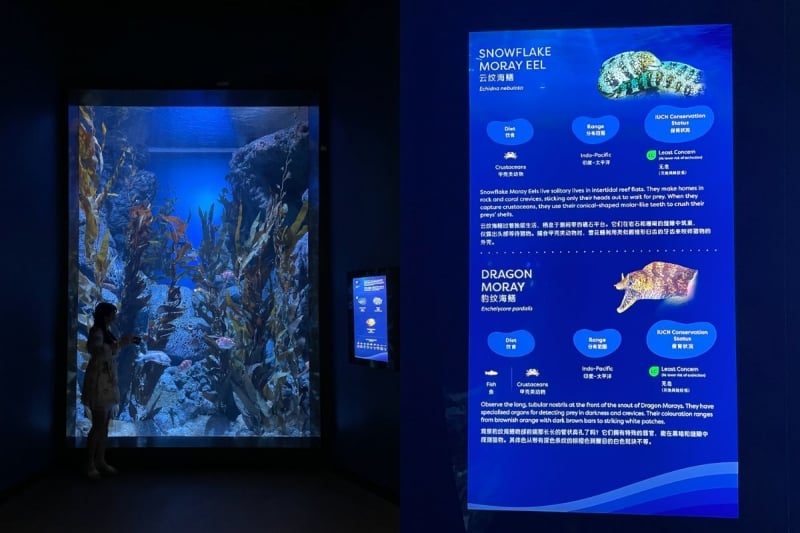
The Singapore Oceanarium is more than a rebrand. It’s a complete reframing of what an aquarium can be. Now positioned as a marine science institute, the space is designed not just to impress, but also to inform. You’ll see this in:
-
The Aquatic Lab, where sea jellies are bred and juvenile fish are cared for
-
Infographics that are as large and eye-catching as the exhibits themselves, gently encouraging you to read
-
In-depth explanations accompany each exhibit, along with labels noting the animals’ endangerment levels
-
Passionate and knowledgeable staff
It’s part of a wider transformation towards a more sustainable tourism. The Oceanarium is now accredited by AZA, partnered with NUS and NTU’s Earth Observatory, and flanked by a zero-energy Research and Learning Centre next door. While those credentials might sound abstract, they show up in small, visitor-facing details, from the hands-on bathoscope devices you can use to view seahorses up close, to fossil workshops that let you unearth and bring home your own discovery.
Accessibility has also been thoughtfully integrated throughout. Wide, smooth pathways make navigation easy for wheelchairs and strollers, and there are wheelchair lifts across multiple levels to ensure no zone is off-limits.
What’s inside: Signature zones and highlights
The Oceanarium is intuitively laid out. You just keep walking, with no confusing forks or missed turns. It also follows a light sense of chronological flow, moving from the marine world today into the distant past and speculative future.
Here are a few standout zones to look out for:
Ocean Wonders
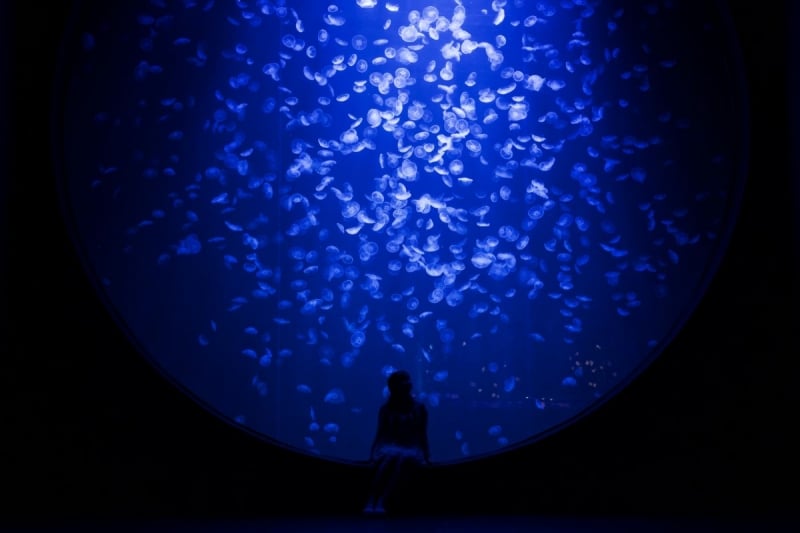
Home to one of the world’s largest sea jelly habitats, this zone features a 6.8-metre kreisel tank filled with thousands of moon jellies, alongside species like Fried Egg and Atlantic Sea Nettles. Soft lighting and ambient music make this an unexpectedly calming stop, especially knowing these jellies are bred on-site.
Ancient Waters
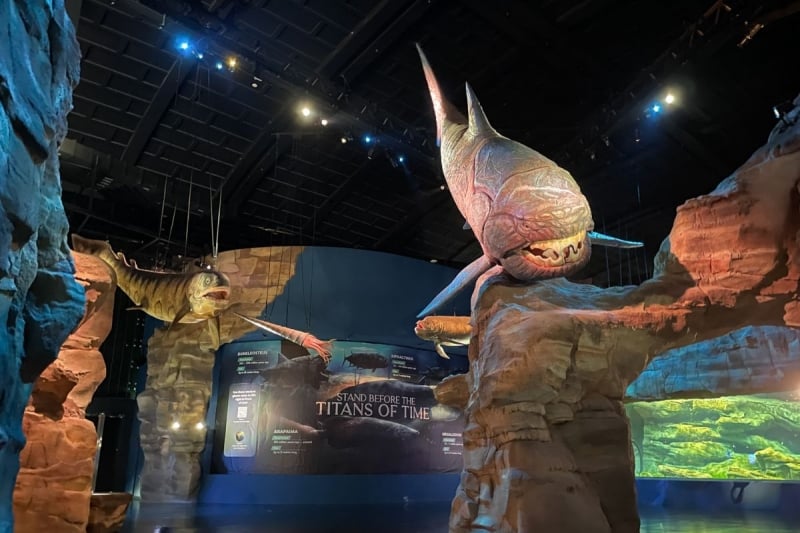
This zone takes you back in time to when prehistoric marine giants ruled the seas. Towering replicas and animatronic models bring long-extinct creatures like the Dunkleosteus and Xiphactinus to life. You’ll also find live exhibits featuring “living fossils” such as the Australian lungfish and horseshoe crab.
With fossil displays, interactive touchpoints, and atmospheric lighting, Ancient Waters offers a hands-on introduction to the evolutionary story of marine life, and how much of it still echoes in the present.
Spirit of Exploration
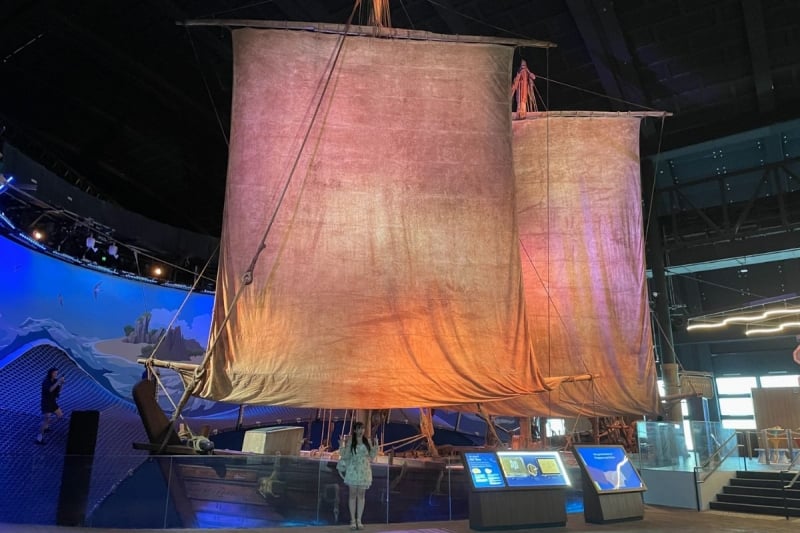
This zone brings a quieter sense of wonder. At its heart is the Jewel of Muscat, a full-sized reconstruction of a ninth-century Arabian dhow gifted by Oman to Singapore in 2010. Surrounded by historical artefacts and maritime-themed installations, the exhibit feels more like a small museum gallery tucked within the Oceanarium. It’s a good place to pause, take in the scale of early ocean exploration, or stop for a break at the nearby Explorer’s Nook café, which serves pastries and marine-themed drinks.

Image Credit: Singapore Oceanarium
The Pier Adventure is a suspended net walkway positioned just above the Jewel of Muscat. It’s a paid activity (S$10 for adults, S$6 for children) and a fun way to get a different perspective of the ship from above. You’re allowed to bounce gently on the web, but jumping isn’t permitted, and staff are on-site to monitor safety. Take note of your footwear, though.
Tripzilla Tip: Covered shoes are recommended, and you’ll want to avoid heels or anything unstable. Since exploring the Oceanarium involves quite a bit of walking, covered shoes will go a long way anyways.
Open Ocean
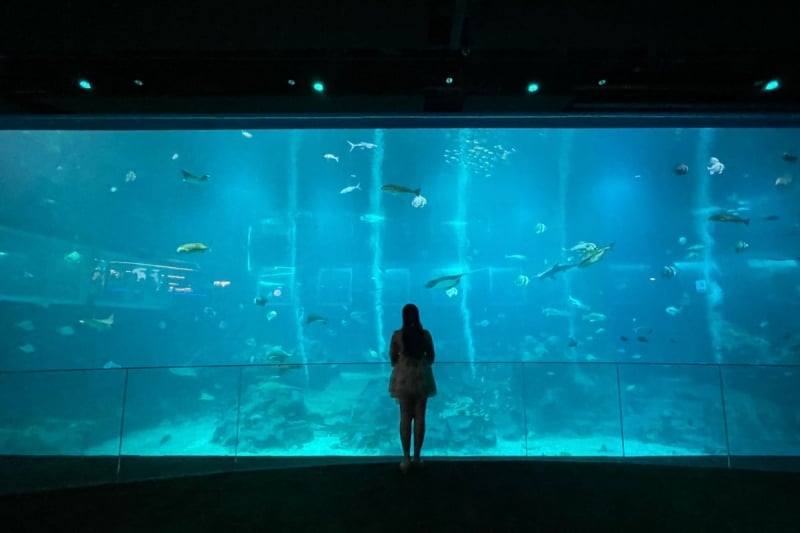
The showstopper. A 36-metre-wide viewing panel with over 40,000 animals, including manta rays and zebra sharks gliding through an 18-million-litre tank. You can sit at Ocean Bites café just beside and stare for as long as you like. It’s the kind of space that makes people speak in whispers.
Whale Fall and Sea Mount
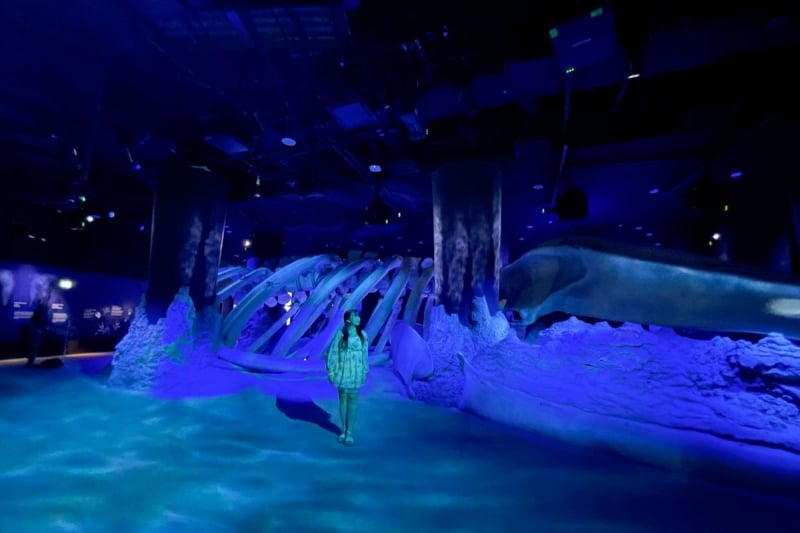
A rare deep-sea story told right: how a fallen whale creates an entire ecosystem at the ocean floor. The full skeleton is surrounded by animated projections of volcanic ridges and deepwater vents. It’s an unexpectedly moving zone that feels almost sacred.
Aquatic Lab
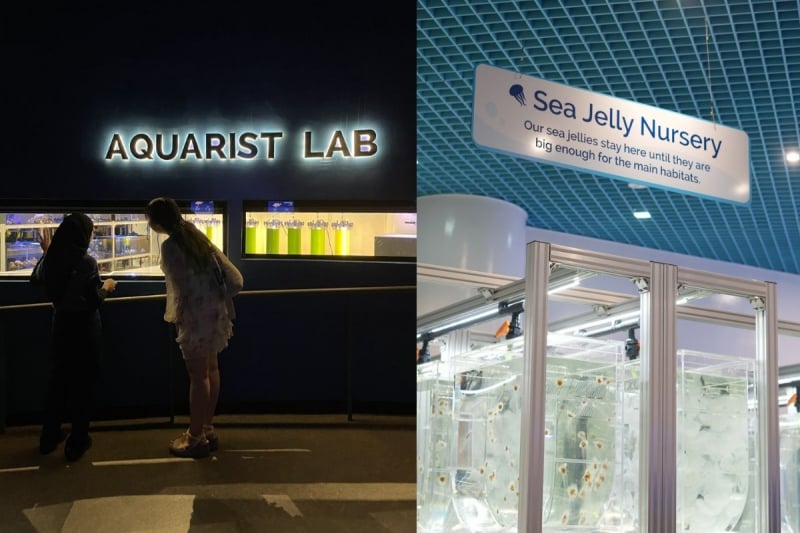
Usually back-of-house, but now partly visible and accessible via the Animal Spotlight: Sea Jellies tour. You’ll learn how staff culture plankton, care for juveniles, and you’ll even get to feed jellies using syringes!
Also read: 8 Must-Visit Aquariums in and Around Tokyo This 2025
Ways to explore: pick a path that suits you
The Oceanarium isn’t just for one kind of visitor. Here’s how you might approach it depending on your mood or group:
Photo-Seekers and Aesthetic Chasers
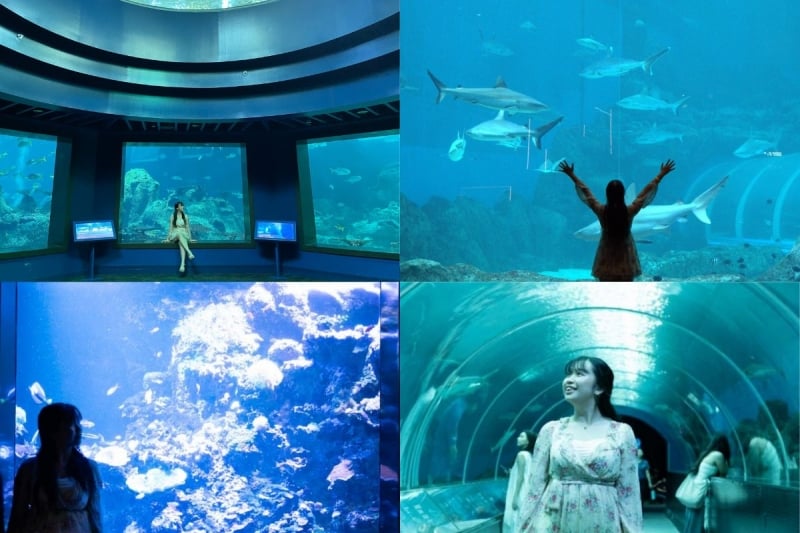
- Snap your wide shots at the Open Ocean panel while the manta rays glide past
-
Head to Ocean Wonders for soft, glowing jellyfish shots perfect for reels
-
Don’t miss Glowing Seas near the entrance for a pop of colour and light
- Take your time! The exhibit lighting and layout make it easy to frame clean, aesthetic shots throughout
Families with Kids
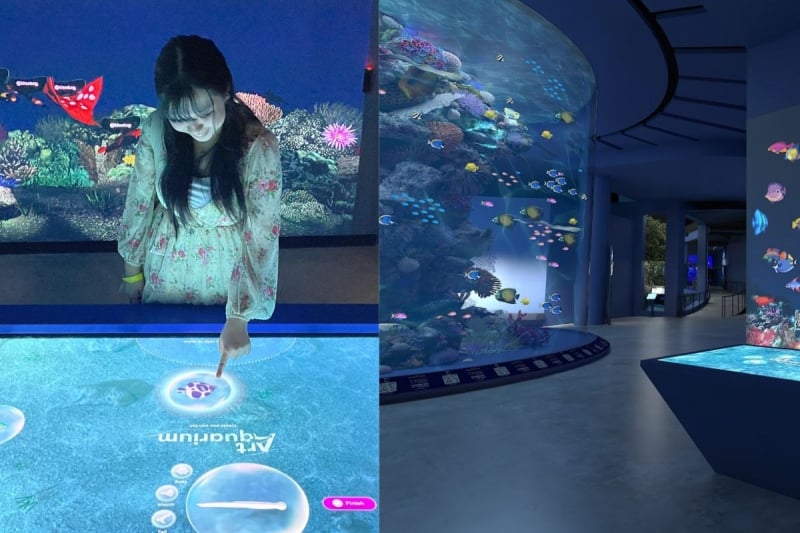
Image Credit (R): Singapore Oceanarium
-
Hands-on fun like touch pools, interactive exhibits, and animal feeding shows
-
Stroller-friendly paths and lifts throughout
-
Look out for Junior Fossilist and other child-friendly workshops
Ocean Nerds and Curious Visitors
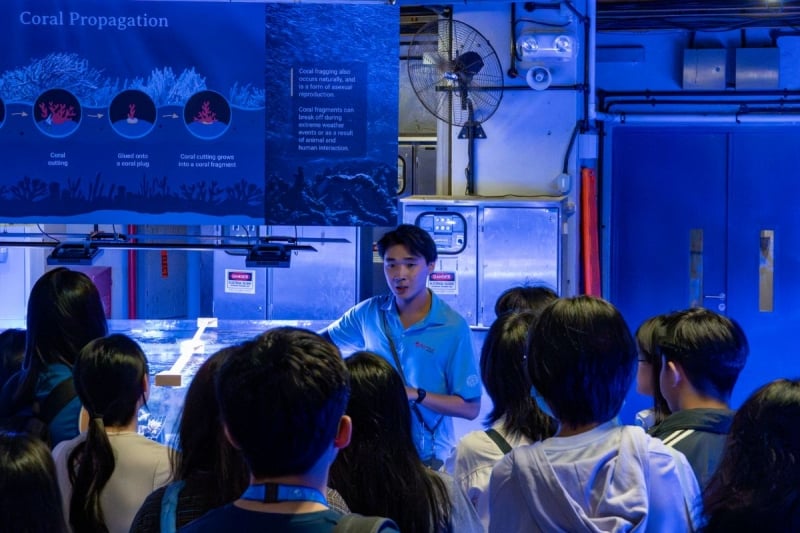
Image Credit: Singapore Oceanarium
-
Sign up for an Insider Experience, which includes back-of-house access and a dolphin encounter
-
Read the infographics! They’re everywhere and genuinely insightful
-
Don’t skip Ocean’s Future and Hallway of Hope. These zones frame climate change in haunting yet hopeful ways
Couples or Casual Visitors
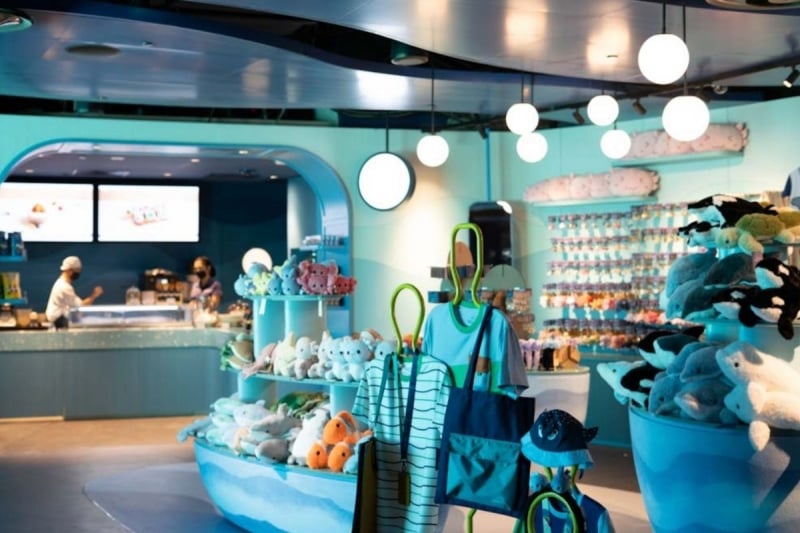
- Take it slow. The layout encourages quiet meandering
-
End at the Open Ocean café for a photo-worthy view
-
Pick up a soft toy, handmade jewellery, or sustainable souvenir at the Oceanarium Store
Food and facilities
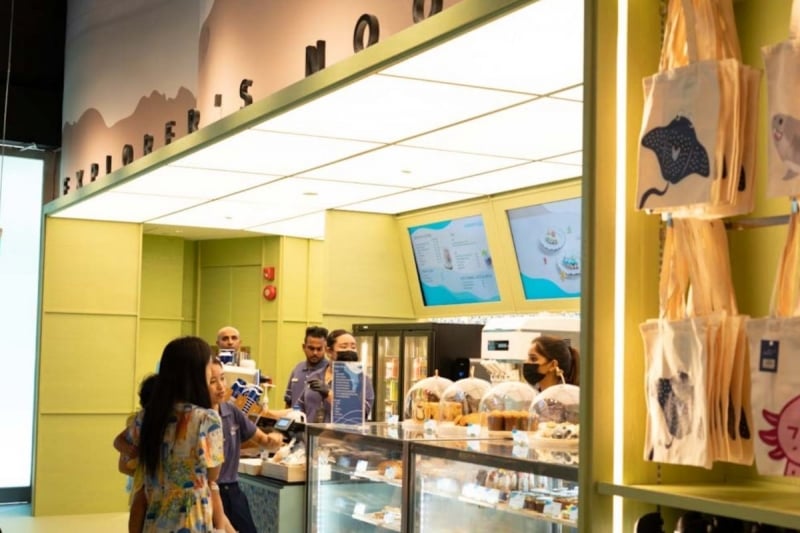
You’ll find food at:
-
Ocean Bites, next to the Open Ocean panel, serving drinks, snacks, and soft serves
-
Tide Deli, with light meals and drinks in a casual aquatic-themed setting
-
Explorer’s Nook, a cafe near Spirit of Exploration with themed pastries and lifestyle keepsakes

There are family rooms, accessible toilets, and clear signposting throughout.
Also read: What’s New at Mandai Singapore 2025: Penguin Backstage Pass & More
Opening celebrations

Image Credit: Singapore Oceanarium Official Website
To mark its official opening, the Singapore Oceanarium is running a series of public programmes and exhibitions from 24 July to 31 August 2025, all included with a regular ticket. These events extend the Oceanarium’s mission into the arts, offering new ways to connect with marine conservation through visual, tactile, and performative experiences.
Some highlights include:
-
Ties That Bind and Evolving Oceans: A Symphony: photo and art exhibitions by local creatives, located in the Spirit of Exploration and Hallway of Hope zones
-
Between Wonder and Wreckage: a collaborative mural in the Open Ocean zone that reflects on human impact
-
Glowing Seas: a large-scale sculpture installation near the entrance
-
Guardians of the Sea: a live dance performance by TRDOco exploring pollution and resilience, staged in Open Ocean on selected dates
-
Badge-making workshops and interactive talks like Focus Without Footprints, led by local artists and conservationists
Tickets and essentials
Ticket prices start from S$50 for adults, S$42 for children (aged 3–12), and S$42 for senior citizens. Singapore residents enjoy a discounted rate, with tickets from S$42 for adults and S$35 for children and seniors. Tickets include access to all 22 zones, and special programmes during the opening celebrations are also available to same-day ticket holders.
The Oceanarium is open daily from 10.00 am to 7.00 pm, with last entry at 6.00 pm.
Final thoughts
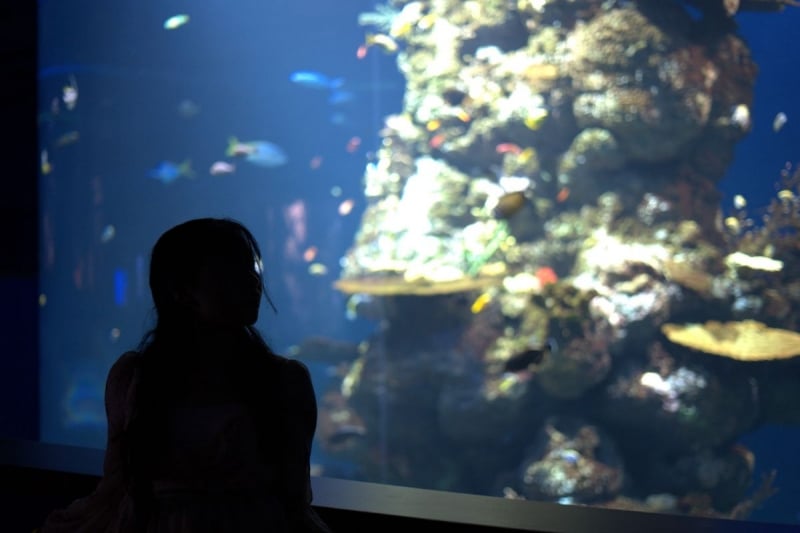
What stood out to me most during my visit was how immersive the Oceanarium felt. Each zone had its own atmosphere, with different lighting, ambient sounds, and visual textures that made the experience feel cohesive and well thought out. The layout is intuitive, with a steady sense of flow that makes the experience feel seamless.
I also appreciated how the animals were presented. There was no sense of them being treated like props or background scenery. With so much emphasis placed on education and conservation, the exhibits encouraged a slower, more thoughtful kind of attention. It made me more aware of how we view marine life, and how that perspective might shift when care and learning are prioritised.
It’s a small change in tone, but a meaningful one. The Oceanarium doesn’t try to overwhelm you. Rather, it gives you space to notice and connect, letting the sights, sounds, and small details sink in at your own pace.




